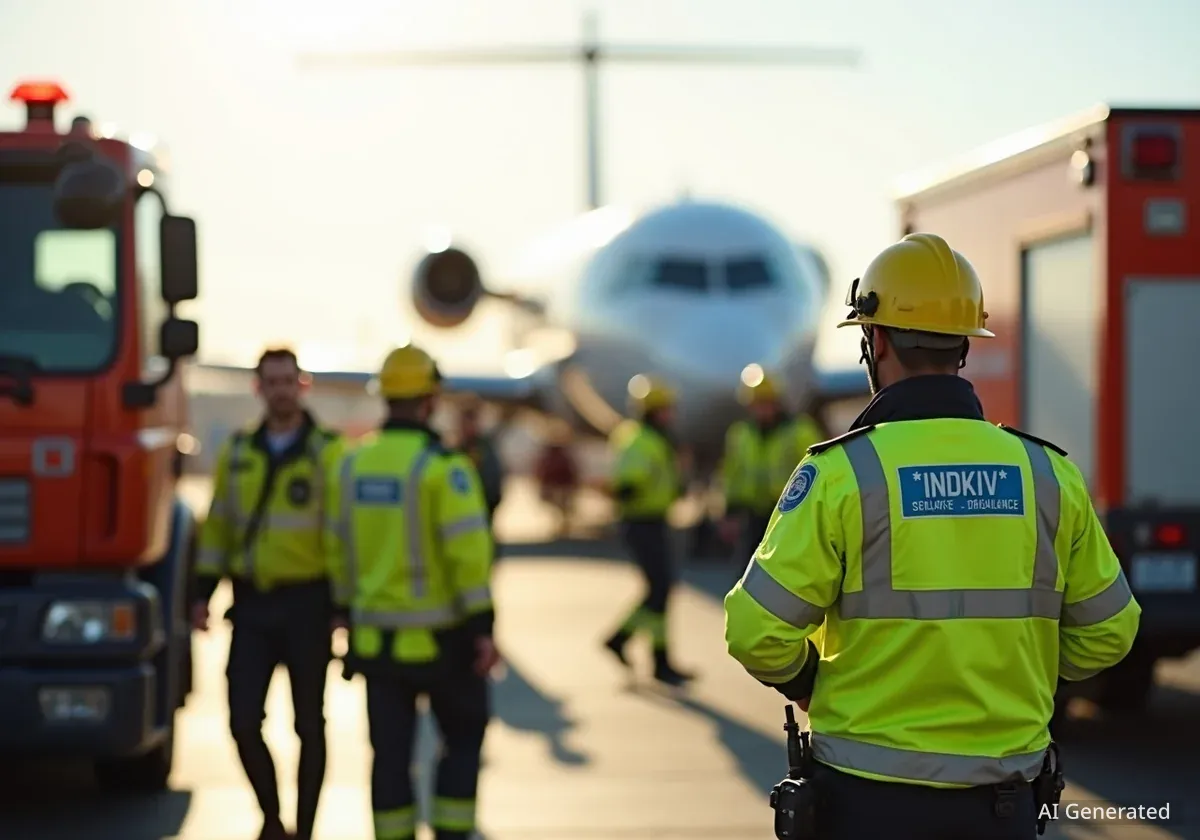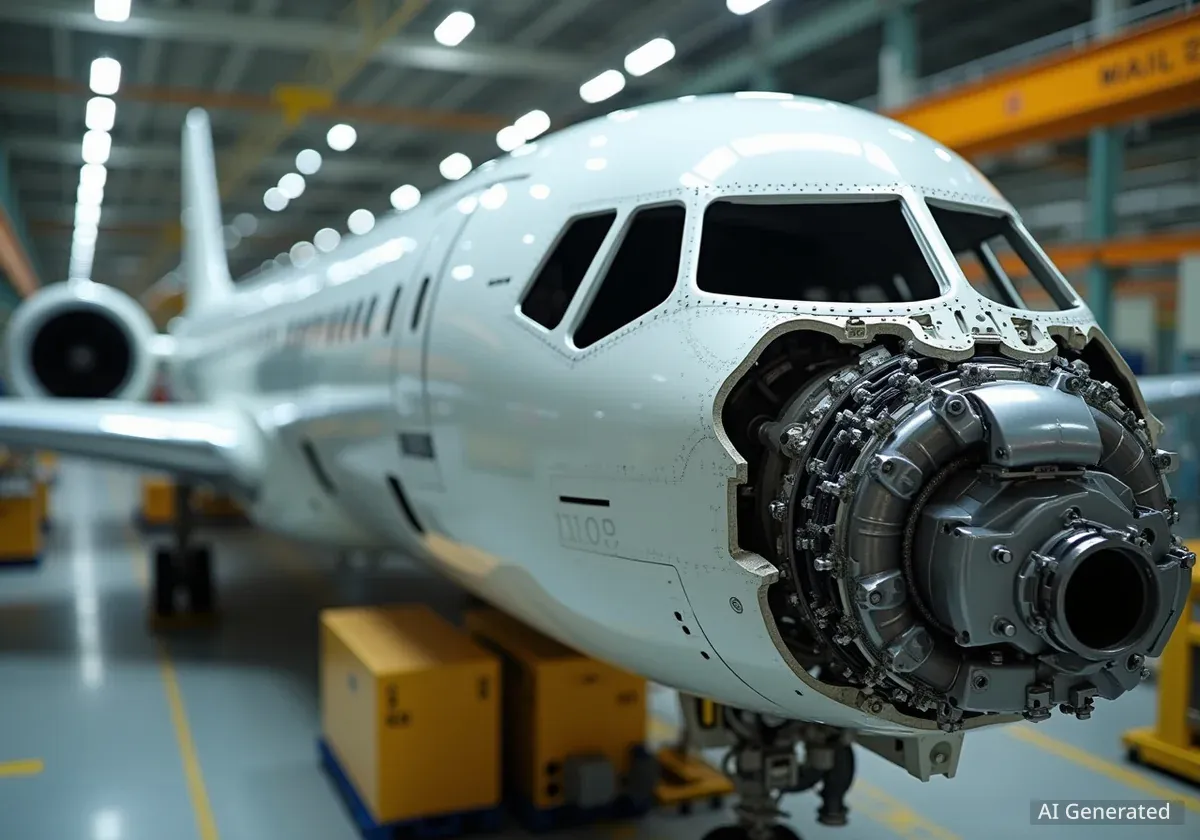An American Airlines flight from Athens, Greece, to Chicago, United States, made an emergency landing in Edinburgh, United Kingdom, on September 29, 2025. The diversion occurred after a passenger on board experienced a serious medical emergency. This unplanned stop highlighted the importance of quick action by flight crews and ground support teams.
Flight AA161, operated by a Boeing 787-8 Dreamliner, departed Athens at 11:05 AM local time. Its intended arrival in Chicago was 2:40 PM. Approximately 90 minutes into the transatlantic journey, the crew identified a critical medical situation involving a passenger.
Key Takeaways
- American Airlines Flight AA161 diverted due to a passenger medical emergency.
- The Boeing 787-8 landed safely at Edinburgh Airport on September 29, 2025.
- Emergency services met the aircraft, and the passenger received immediate hospital care.
- The incident caused significant delays but prioritized passenger safety.
- Airline protocols and crew training proved critical in managing the situation.
Emergency Protocol Initiated Mid-Flight
The decision to reroute the aircraft was made after the flight crew consulted with medical experts. They determined that the passenger required immediate medical attention that could not be provided adequately onboard. Edinburgh was identified as the closest airport capable of offering the necessary medical facilities.
The aircraft was cruising at an altitude of 36,000 feet over the Atlantic Ocean when the emergency developed. The captain quickly made the decision to divert to Edinburgh. This change added approximately 300 miles to the flight's original route but was deemed essential for the passenger's well-being.
Fact: Boeing 787-8 Dreamliner
The Boeing 787-8 Dreamliner is a wide-body, twin-engine jet airliner. It is known for its fuel efficiency and long-range capabilities, typically used for transatlantic and transpacific flights. It can carry between 242 and 330 passengers depending on configuration.
Swift Action by Flight Crew
The flight crew's prompt response was crucial. They worked with onboard medical staff and flight attendants to stabilize the passenger's condition as the aircraft began its descent. This coordinated effort helped manage the emergency effectively.
The plane landed safely at Edinburgh Airport at approximately 1:00 PM local time. This was about two and a half hours later than its original scheduled arrival in Chicago. This delay underscores the seriousness of the medical situation.
Ground Support and Passenger Care
Upon arrival at Edinburgh Airport, local emergency medical services (EMS) were prepared. A fleet of ambulances and emergency responders met the aircraft on the tarmac. They immediately boarded the plane to assess the passenger's condition.
The passenger, whose identity remains confidential, was quickly transferred to an ambulance. They were then transported to a nearby hospital for further evaluation and specialized medical care. This rapid transfer ensured the passenger received timely treatment.
"The incident was handled with care and professionalism," an American Airlines spokesperson confirmed. "The safety of all aboard remained the airline’s top priority throughout the ordeal."
Background on Diversions
Medical emergencies are a common reason for flight diversions. Airlines have strict protocols and training in place to manage these situations. The decision to divert is always based on the severity of the emergency and the availability of medical facilities at nearby airports.
Impact on Remaining Passengers
While the medical emergency caused a significant delay for other passengers, American Airlines focused on their safety and well-being. Passengers remained on the aircraft while the situation was managed on the ground. The crew kept everyone informed about the steps being taken.
American Airlines has stated it is arranging new travel plans for the affected travelers. Passengers who were continuing to Chicago will be rebooked onto the next available flights. The airline is managing these arrangements to minimize further disruption.
Lessons in Preparedness and Safety
The medical emergency on Flight AA161 highlights the importance of fast decision-making and comprehensive training for flight crews. Such training prepares them to handle unexpected medical situations effectively. The diversion to Edinburgh followed standard emergency procedures, which prioritize passenger safety.
- Crew Training: Regular training ensures flight attendants and pilots can respond to diverse emergencies.
- Medical Consultation: Access to ground-based medical experts helps crews make informed decisions.
- Airport Capabilities: Identifying suitable airports with necessary medical infrastructure is key.
American Airlines expressed gratitude to its flight crew, the passengers, and the medical personnel in Edinburgh. Their swift and cooperative efforts were essential in managing a high-pressure situation. The airline reaffirmed its commitment to providing a safe travel environment for all.
The successful emergency landing and the safe management of the medical situation serve as a testament to the airline's preparedness. It also underscores its commitment to passenger safety. American Airlines continues to monitor the passenger's recovery and assist those impacted by the flight diversion.





